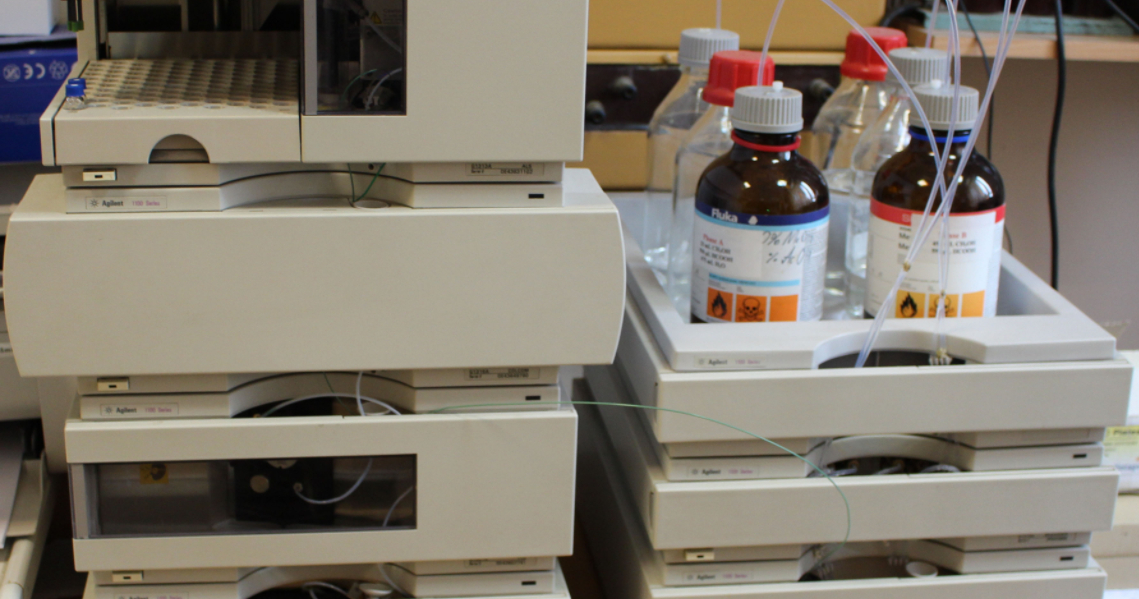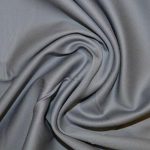
High performance liquid chromatography (HPLC) is the method of choice for separation and quantitation of polar and nonvolatile compounds, depending on the detector used UV-DAD or FLD it is possible to analyse individual compounds with UV or fluorescence absorption.
HPLC-DAD-FLD Method to Detect Nine Kinds of Fluorescent Brighteners
Liu Ying, Wang Xiaobing, Li Qiyan, Yu Haiying, Xu Lihua
(Sandong Food and Drug Inspection Institute, Shandong Jinan 250101)
Country: China
Paper published in: China Surfactant Detergent & Cosmetics May 2018
Abstract:
This paper detected and analyzed nine kinds of fluorescent brighteners in textiles and toilet paper. Through ultrasonic extraction of textiles or toilet paper with 30% Nmine N-dimethylformamide aqueous solution as the solvent, the sample solution was analyzed by high performance liquid chromatography-diode array-fluorescence (HPLC-DAD-FLD). The qualitative analysis was carried out by comparing the retention time and spectral characteristics between the samples and the reference materials. And the peak area of fluorescent brightener components in compared samples and standard materials was quantified by external standard method. Based on the optimization of extraction solvent, extraction temperature, extraction time, and chromatographic conditions, a detection method of nine fluorescent brighteners in textiles and toilet paper by HPLC-DAD-FLD was established. The method is simple, sensitive, accurate, and suitable for the rapid selection and detection of fluorescent bleaching agents in textiles and toilet paper.
More people are beginning to pay attention to a fluorescent dye. It can absorb the safety of this ingredient invisible to the human eye in the light. Although some research institutions use wavelengths 300 ~400 nm on human health, the UV rays re-energized human naked eyes and environmental impacts were evaluated, and the results showed that the wavelength seen in current use was 420 ~480 nm blue or blue purple fluorescence and the risk is less.
The use of Fluorescent Whitening Agents (FWAs) in products makes mandatory restrictions, and no relevant standard testing methods have been introduced. In view of this, it is necessary to establish a qualitative/quantitative detection method for fluorescent whitening agents in various products by relevant institutions.
At present, the detection method of fluorescent inhalants mainly includes ultraviolet light exposure observation method, fluorescent spectrophotometry, liquid chromatography (HPLC) method and liquid chromatography-mass spectrometry.
Among them, the ultraviolet light exposure observation method can only be characterized, and the fluorescent spectrophotometric method can only quantify the total amount of fluorescent ingredients, and the liquid chromatography.
Although the mass spectrometry can be qualitatively quantified for fluorescent additives, the instruments are expensive and costly, so they are often used in experiments.
Fluorescent detector (FLD) is suitable for compounds that can stimulate fluorescence and have high sensitivity; diode array detector (DAD) is the most widely used liquid chromatography detector with the most commonly used liquid chromatography.
References:
- Gu Yuxiang, Zhou Zelin, Wang Dinglin. Applications of fluorescent brightener in detergent and cosmetics as well as progress in research work field for its detection technique [J]. China Surfactant Detergent & Cosmetics, 2015, 45(8):468-473.
- Ai Jing, Hung Lining, Yan Tingting, et al. Safety analysis of fluorescent whitening agent for human skin [J]. Chinese Journal of Aesthetic Medicine, 2016, 25(3):104-107.
- Qu Pengfeng, Fu Wusheng, Liu Wenjing, et al. Determination of fluorescent whitening agents in food contact paper by UV irradiation method combined with gauze absorption [J]. Chinese Journal of Food Hygiene, 2016, 28(3):352-355.
- Luo Guanzhong, Liu Xiang, Wang Xiaodong, et al. Determination of fluorescent whitening agents in household paper by fluorescence spectrophotometry [J]. China Measurement & Test, 2009, 35(4):68-71.
- Tan Yao, Wang Qunwei, Xu Diming, et al. Establishment of qualitative and quantitative of fluorescent whitening agents in plastics [J]. China Plastics Industry, 2011, 39(6):52-55.
- Lü Chunhua, Ji Xinhe, Shi Yingzhu, et al. HPLC determination of 5 fluorescent whitening agents in cosmetics [J]. Ptca (Part B:Chem.Anal.), 2015, 51(5):609-612.
- Yu Peipei, Cheng Jun, Gu Hua, et al. Determination of seven fluorescent whitening agents in whitening masks by high performance liquid chromatography [J]. Journal of Analytical Science, 2016, 32(5):805-809.
- Chen H C, Wang S P, Ding W H. Determination of fluorescent whitening agents in environmental waters by solid-phase extraction and ion pair liquid chromatography-tandem mass spectrometry [J]. Journal of Chromatography A, 2006, 1102(1/2):135-142.
- Chen H C, Ding W H. Hot-water and solid-phase extraction of fluorescent whitening agents in paper materials and infant clothes followed by unequivocal determination with ion-pair chromatography-tandem mass spectrometry [J]. Journal of Chromatography A, 2006, 1108(2): 202-207.

